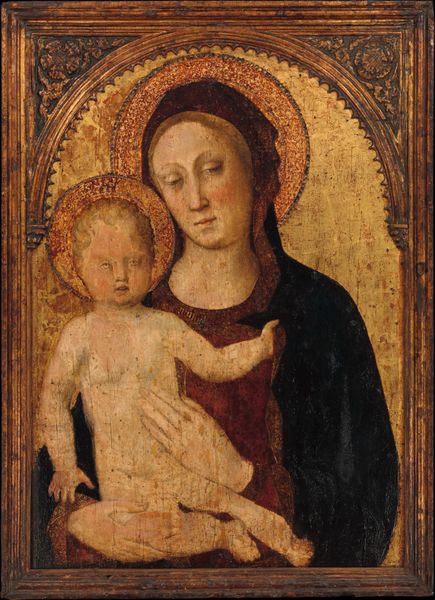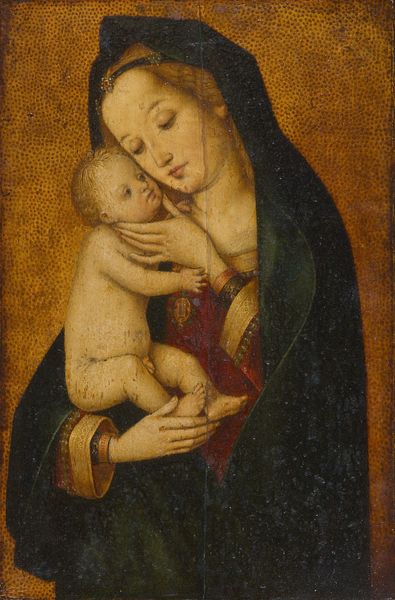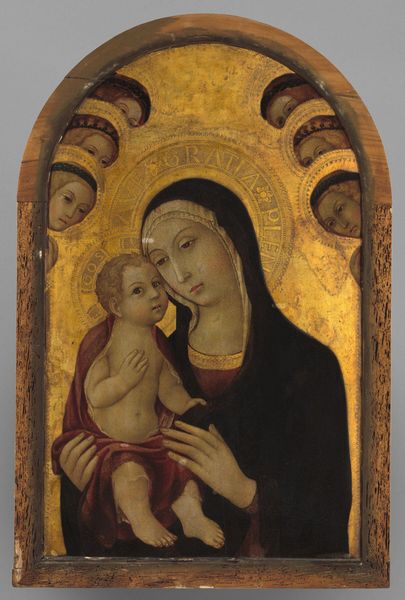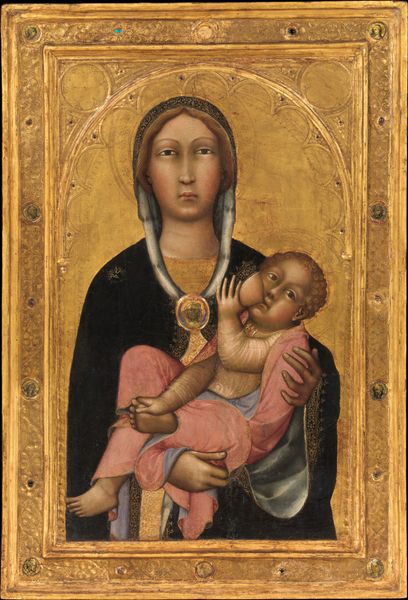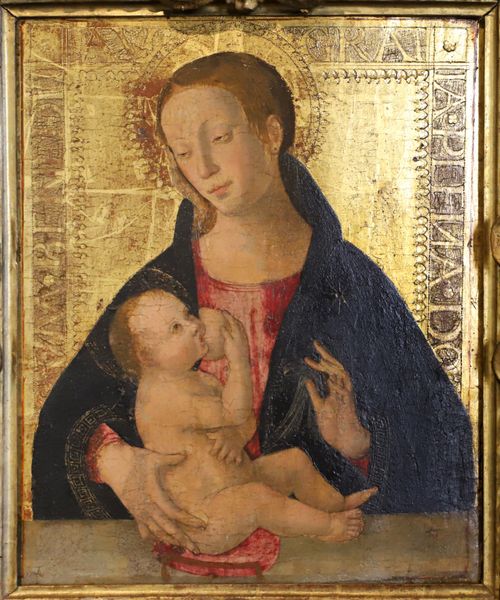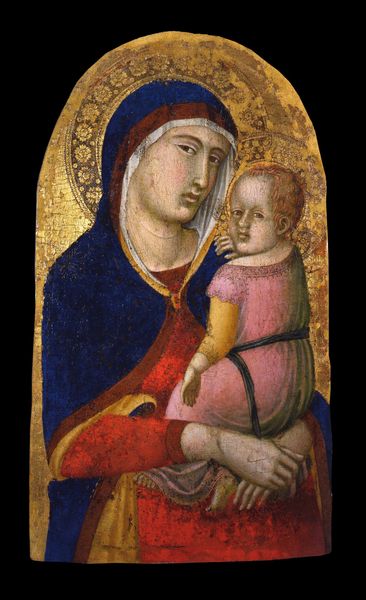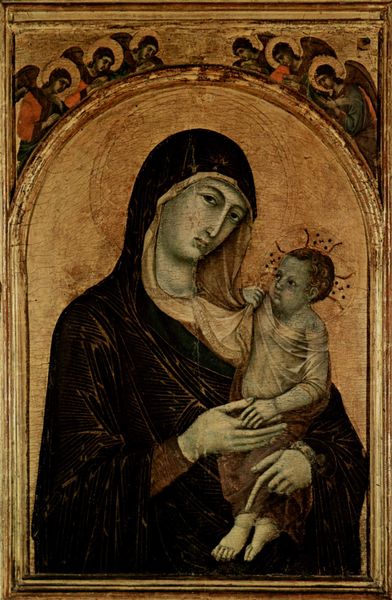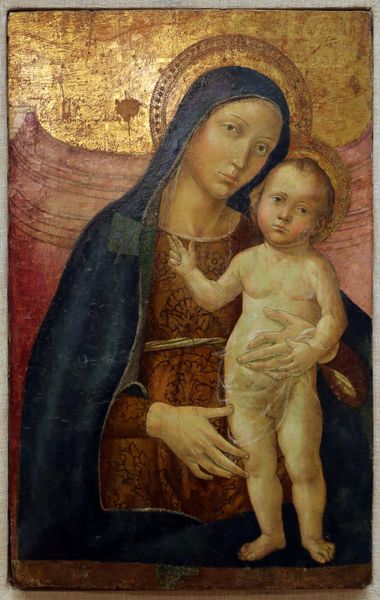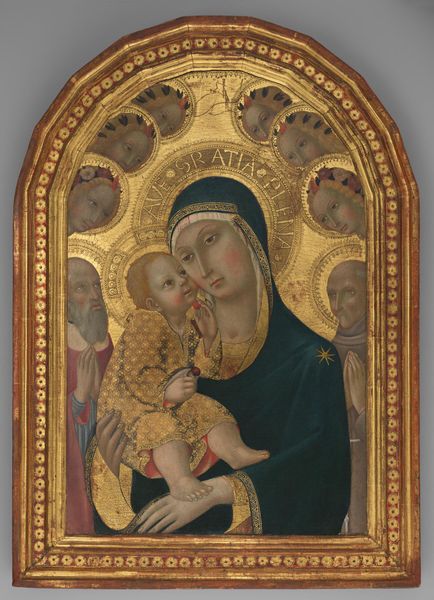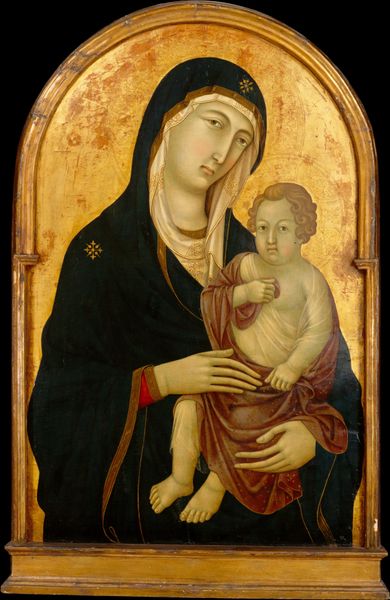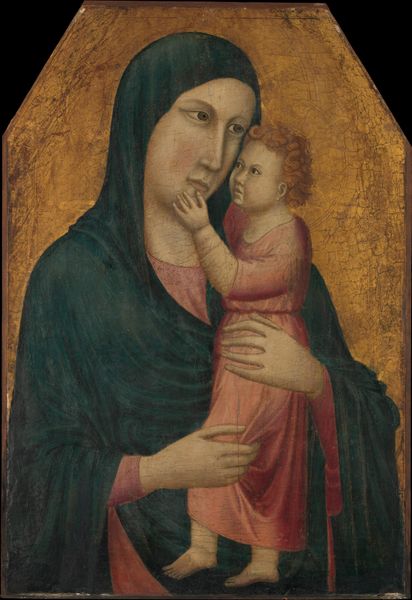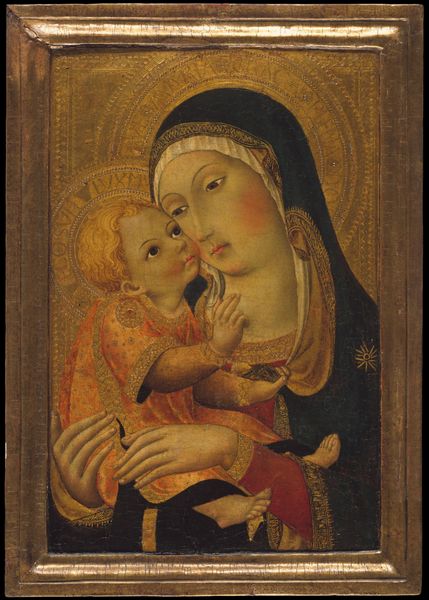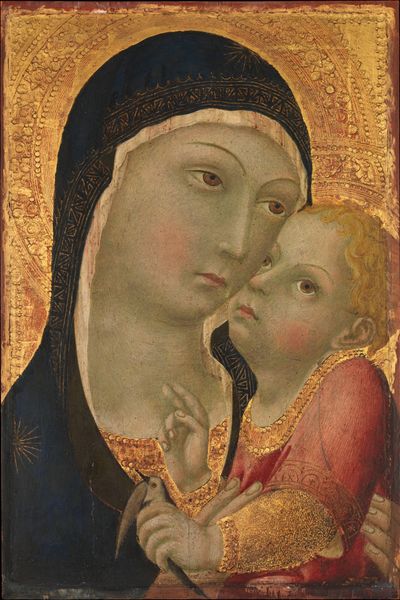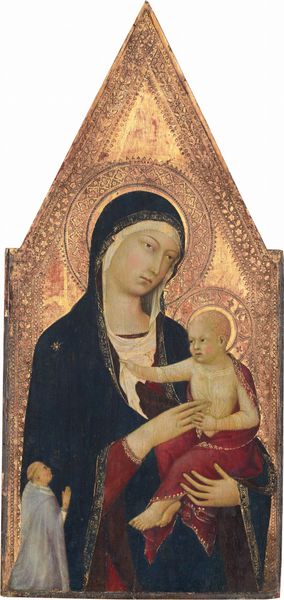![Madonna and Child, with the Blessing Christ [middle panel] by Pietro Lorenzetti](/_next/image?url=https%3A%2F%2Fd2w8kbdekdi1gv.cloudfront.net%2FeyJidWNrZXQiOiAiYXJ0ZXJhLWltYWdlcy1idWNrZXQiLCAia2V5IjogImFydHdvcmtzLzUyNWRkYmMyLTUxYzMtNGYyOS04MjJlLTRmZWU3MDRjMGUxZi81MjVkZGJjMi01MWMzLTRmMjktODIyZS00ZmVlNzA0YzBlMWZfZnVsbC5qcGciLCAiZWRpdHMiOiB7InJlc2l6ZSI6IHsid2lkdGgiOiAxOTIwLCAiaGVpZ2h0IjogMTkyMCwgImZpdCI6ICJpbnNpZGUifX19&w=3840&q=75)
Madonna and Child, with the Blessing Christ [middle panel] c. 1340
0:00
0:00
panel, tempera, painting
#
portrait
#
medieval
#
panel
#
tempera
#
painting
#
sienese-school
#
figuration
#
oil painting
#
italian-renaissance
Dimensions: painted surface: 98 × 49.2 cm (38 9/16 × 19 3/8 in.) overall: 99.5 × 52.3 cm (39 3/16 × 20 9/16 in.)
Copyright: National Gallery of Art: CC0 1.0
Editor: Here we have Pietro Lorenzetti's "Madonna and Child, with the Blessing Christ," a tempera on panel painting from around 1340. What strikes me immediately is the somber mood, contrasting with the gilded background, it’s beautiful and a little sad. How do you interpret this work, considering its historical context? Curator: It’s precisely that tension which is so compelling, isn't it? We see a tender image, yet it’s framed by the weight of the era's social structures and religious dogma. Consider the role of women in the 14th century; Mary represents the ideal, but also the constraints placed upon them. Do you notice how her gaze is averted, almost submissive? Editor: Yes, her eyes look downward, she seems contemplative rather than assertive. It feels very symbolic. Curator: Exactly. And the child's blessing gesture – a symbol of power within a patriarchal framework, yet dependent entirely on the mother figure. Where do you see the intersection of the personal and the political in this dynamic? How did expectations affect portrayals? Editor: I guess I hadn't considered the inherent power dynamic there. The painting appears devotional, but through your lens, I now also see a commentary, subtle perhaps, on societal expectations. Curator: Lorenzetti's choices can be seen as subtle forms of resistance or negotiation within that patriarchal context. What might later viewers take from it, do you imagine? Editor: I will never see a medieval "Madonna and Child" the same way again! There's so much more beneath the surface. Thank you! Curator: Indeed. It is vital we consider socio-political factors to understand historical pieces fully.
Comments
No comments
Be the first to comment and join the conversation on the ultimate creative platform.
